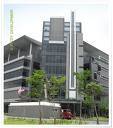.jpg)
KUALA LUMPUR: Many landowners in Kampung Baru, located in the heart of Kuala Lumpur city centre, believe that land there should fetch prices which are on par with values in other parts of the city's Golden Triangle.
Kampung Baru Development Association vice-president and Dr Mohd Yusof Ismail told City & Country that land values in Kampung Baru should be as high as those in the Golden Triangle where real estate transactions in 2006 - 2007 had breached RM2,000 psf.
The Association said the government and developers should therefore consider this when acquiring land here for redevelopment. Kampung Baru is slated for redevelopment under the Draft Kuala Lumpur City Plan 2020.
The association, which represents landowners in Kampung Baru, has presented its views on the redevelopment plans in a memorandum to Kuala Lumpur City Hall and in a public hearing on April 3.
"We are not against the redevelopment plan but there are weaknesses that we have to address," says Mohd Yusof who holds a PhD in urban planning from Cornell University in the US.
According to data in the Draft City Plan, Kampung Baru spans over 378.93 acres of which 225.89 acres (874 lots) are in an area gazetted as Malay Agricultural Settlement since 1897.
It was gazetted to protect and preserve Malay land ownership. Such land, both undeveloped and developed, cannot be transferred, sold or occupied by non-Malays.
Henry Butcher Malaysia's data on recent transactions in Kampung Baru show that prices of land here range from RM200 to RM400 on the average.
Henry Butcher chief operating officer Tang Chee Meng agrees that land values here are not reflective of its prime location within the city centre.
In comparison, indicative land values from Henry Butcher show that values in the KLCC vicinity are around RM1,500 to RM2,000 psf.
"Furthermore, non-Malays are prohibited from owning land in Kampung Baru while the Golden Triangle do not have such restrictions," he cited as reasons for the difference in values.

.jpg)
.jpg)

.jpg)
.jpg)
